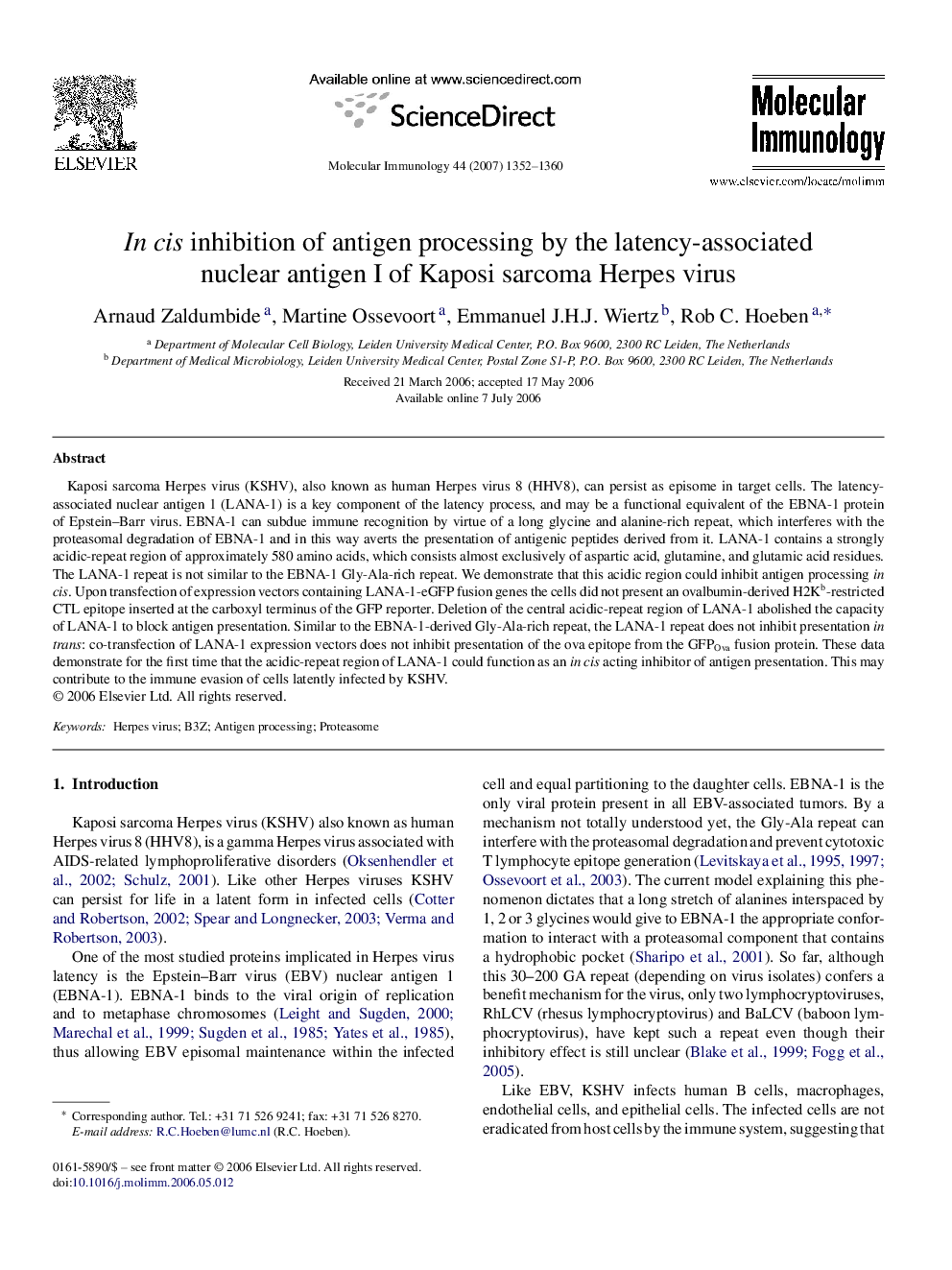| کد مقاله | کد نشریه | سال انتشار | مقاله انگلیسی | نسخه تمام متن |
|---|---|---|---|---|
| 2832489 | 1163838 | 2007 | 9 صفحه PDF | دانلود رایگان |

Kaposi sarcoma Herpes virus (KSHV), also known as human Herpes virus 8 (HHV8), can persist as episome in target cells. The latency-associated nuclear antigen 1 (LANA-1) is a key component of the latency process, and may be a functional equivalent of the EBNA-1 protein of Epstein–Barr virus. EBNA-1 can subdue immune recognition by virtue of a long glycine and alanine-rich repeat, which interferes with the proteasomal degradation of EBNA-1 and in this way averts the presentation of antigenic peptides derived from it. LANA-1 contains a strongly acidic-repeat region of approximately 580 amino acids, which consists almost exclusively of aspartic acid, glutamine, and glutamic acid residues. The LANA-1 repeat is not similar to the EBNA-1 Gly-Ala-rich repeat. We demonstrate that this acidic region could inhibit antigen processing in cis. Upon transfection of expression vectors containing LANA-1-eGFP fusion genes the cells did not present an ovalbumin-derived H2Kb-restricted CTL epitope inserted at the carboxyl terminus of the GFP reporter. Deletion of the central acidic-repeat region of LANA-1 abolished the capacity of LANA-1 to block antigen presentation. Similar to the EBNA-1-derived Gly-Ala-rich repeat, the LANA-1 repeat does not inhibit presentation in trans: co-transfection of LANA-1 expression vectors does not inhibit presentation of the ova epitope from the GFPOva fusion protein. These data demonstrate for the first time that the acidic-repeat region of LANA-1 could function as an in cis acting inhibitor of antigen presentation. This may contribute to the immune evasion of cells latently infected by KSHV.
Journal: Molecular Immunology - Volume 44, Issue 6, February 2007, Pages 1352–1360